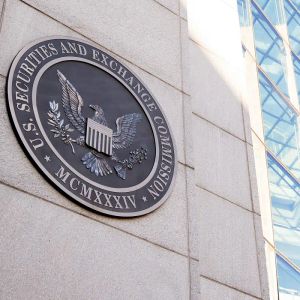Edoardo Farina, CEO of Alpha Lions Academy, in a recent discussion with Versan Aljarrah, addressed major concerns surrounding the cryptocurrency market, particularly focusing on the growing regulatory pressure on stablecoins like USDT (Tether) and the broader implications for the crypto ecosystem. The conversation was framed around a new article published by the Bank for International Settlements (BIS) on June 24, which warns about the systemic risks posed by stablecoins. According to the BIS report cited in the discussion, stablecoins threaten monetary sovereignty and can undermine capital markets. Farina and Aljarrah specifically highlighted the long-standing concerns over Tether’s operational model, its lack of transparency, and historical regulatory issues. The BIS article aligns with tightening regulations in Europe that have effectively excluded Tether from operating within the region. Both speakers pointed out that the increasing scrutiny of Tether signals the beginning of a significant market shift. BTC Demand CRASHES as XRP Adoption Surges https://t.co/9x2yl91jvK — EDO FARINA 🅧 XRP (@edward_farina) June 30, 2025 Stablecoin Risks and Regulatory Crackdown Farina and Aljarrah stated that although XRP and other utility-based assets might experience short-term market turbulence, they are likely to benefit from the reallocation of liquidity away from speculative assets. They cited XRP, XLM, HBAR, and Algorand as examples of blockchains that are technically efficient, fully auditable, and better prepared to comply with evolving regulatory standards. This preparedness makes these networks attractive for future institutional use cases as the tokenization of real-world assets becomes mainstream. A major part of their conversation focused on Tether’s position in the market. Aljarrah described Tether as functioning like an unregulated shadow bank, suggesting that it produces synthetic dollars without proper oversight. He warned that Tether’s eventual collapse is probable and could become a justification for governments to introduce sweeping regulations alongside government-backed stablecoins. According to them, this scenario would fundamentally change the structure of the crypto market. Bitcoin’s Demand Collapse Raises Concerns Farina also raised concerns about Bitcoin’s recent price movement. Despite being near its all-time highs, Bitcoin’s demand metrics suggest weakening interest. He pointed out that Google search trends and trading volumes for Bitcoin are at historically low levels relative to its price, indicating that the rally may not be sustainable. Farina believes the current surge is driven largely by retail speculation rather than institutional demand, making it vulnerable to an abrupt correction. They further referenced Tether’s past regulatory issues, including a $42.5 million fine imposed by the U.S. Commodity Futures Trading Commission (CFTC) in 2021 for misleading statements regarding its reserves. Farina and Aljarrah described Tether as the linchpin of a speculative market structure that is at significant risk of collapsing once governments finalize and deploy tokenized financial infrastructures. We are on X, follow us to connect with us :- @TimesTabloid1 — TimesTabloid (@TimesTabloid1) June 15, 2025 XRP Positioned for the Utility-Driven Future A core emphasis of their discussion was the shift towards real-world utility. They suggested that the forthcoming regulatory overhaul will result in the elimination of non-compliant crypto projects. This process, in their view, will favor networks like the XRP Ledger, which offers consistent transaction costs, real-time auditability, and scalability for institutional use . The conversation included a video clip featuring Ripple CTO David Schwartz, who explained how XRP’s design aligns with institutional requirements, particularly highlighting features like predictable fees and auditability. Additionally, Schwartz’s remarks, shared during the discussion, projected that hundreds of billions of dollars in tokenized real-world assets are likely to move onto the XRP Ledger . Schwartz argued that XRP offers capabilities that many other blockchains cannot provide, specifically the ability for institutions to verify transactions in real time without relying on external intermediaries. This function reduces operational costs and minimizes counterparty risks. Farina and Aljarrah stressed that the cryptocurrency market is entering a transitional phase. They argued that XRP and similar utility-driven blockchains are well-positioned to thrive in a regulated environment focused on compliance, interoperability, and tangible utility. Meanwhile, assets such as Bitcoin, Ethereum, and Tether face increasing pressure from both regulatory bodies and the inherent limitations of their technical frameworks. Farina’s assessment ultimately pointed to a significant decline in Bitcoin demand, coinciding with rising adoption of XRP as institutional participants begin prioritizing compliance and real-world use cases over speculative trading models. Disclaimer : This content is meant to inform and should not be considered financial advice. The views expressed in this article may include the author’s personal opinions and do not represent Times Tabloid’s opinion. Readers are advised to conduct thorough research before making any investment decisions. Any action taken by the reader is strictly at their own risk. Times Tabloid is not responsible for any financial losses. Follow us on X , Facebook , Telegram , and Google News The post XRP Adoption Surges As Bitcoin Demand Crashes appeared first on Times Tabloid .
















